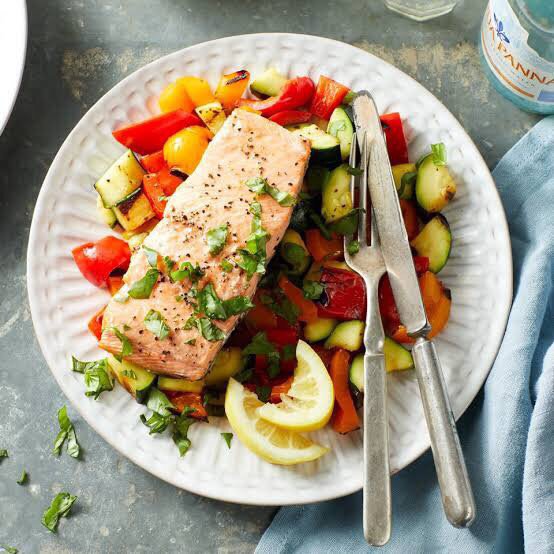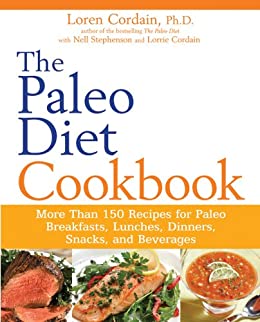
The paleo diet emphasizes eating food that our ancestors would have eaten. This diet includes foods like apricots, dried pumpkin seeds, and banana with almond butter. It's also rich in sweet potatoes, chicken, and other veggies. Although the paleo diet may seem restrictive, EatingWell believes in the importance of certain foods. We will discuss the best foods to eat while keeping a healthy diet.
Pola makanan paleolithic manusia
Christina Warinner, Ph.D., studied pola makan manusia purba and mitos-mitos pola makanan paleolithic manusia in 2010. She reveals that manusia Paleolithic consumed large amounts of daging and ate all kinds of meat. This myth was popularly believed by paleolithic individuals, but it is now obsolete and irrelevant.
The diet of paleo (also known as the diet manusia-gua) is a way to eat like what manusia.gua and other people used to eat. They not only improve their kesehatan but also help to preserve their heritage. This diet is not right for everyone. It is not for everyone.
The Ramasokat lukisan is composed of two types kelompokan: Ceruk and Lukisan Gua. They were found in the Liabalano and Sulawesi Tenggara areas. The lukisan gua contains a mixture of proteins, fats, carbohydrates, and amino acids. These nutrients support healthy living. They may also help us understand the details of human evolution.

Modern humans eat a variety of foods that have many benefits but also come with some risks. People who eat foods high in nutrients such as those from the Paleolithic Era will be more susceptible to developing diseases. Your risk of developing disease is reduced if you eat clean. Clean Eating will help you eat better. These are the obvious benefits to eating clean: A diet low in fat can help your health. You won't get sick by overeating.
Paleolithic diet: Foods allowed
The majority of processed food contains added sugars, vegetable oils and artificial sweeteners. This can have adverse effects on your health. Salt and refined sugars are both factors that contribute to obesity and can cause heart disease. Vegetable oils are also controversial; the American Heart Association recommends safflower or corn oil as replacements for canola oil. These oils have high levels of omega-6 essential fatty acids.
While some commercial paleo diets have very strict dairy restrictions, others are more restrictive. Paleolithic diets allow certain foods, such as lean pork loin and roasted chicken with onion, carrot stuffing and steam broccoli. Other paleo diets allow honey and maple syrup in small quantities. This diet has received varying degrees of scientific research.
Legumes, which are high in phytic acid, should be avoided by paleo-lovers. These substances prevent the absorption and utilization of essential minerals. These substances are allowed in certain situations. Although it can be tempting for some to eat legumes or potatoes, it is not advised to do this as often as with other processed foods. Your daily meal plan should contain plenty of fruits or vegetables.
Guidelines for Paleolithic eating
The Guidelines for Eating a Paleolithic Diet are very different from the typical modern diet, but they are both based on the same principles. The Paleolithic diet is primarily based on animal products but it is rich in plants so there are no restrictions. It is important to remember that your genetic makeup may not allow you to eat this diet. Additionally, the increased meat consumption may be detrimental to your health. If you think that you might benefit from a Paleolithic diet, you should proceed with caution.

Paleolithic diet excludes the most popular food groups, including dairy products. These key food groups are at high risk for nutritional deficiencies. A deficiency or lack of calcium in your diet can lead tooth decay. This could have a negative impact on your teeth and bones. Calcium also plays a key role in blood Clotting and Muscle Contracting. Whole grains can reduce your risk of stroke, heart disease and type 2 diabetics. However, because grains were largely eliminated, you may find yourself at risk for calcium deficiency.
There are many guidelines that Paleolithic people should follow when eating. It emphasizes eating healthy foods and nutrient-rich plants. It also limits processed foods. It is important to adhere to the guidelines so that you don’t get carried away. Each person's paleolithic lifestyle is unique. It is important for you to know that the Paleolithic Diet is based upon a lifestyle that was popular 10,000 to 12,000 Years ago.
FAQ
Where can I find online cooking classes for free?
You can find free cooking lessons on many websites. YouTube is a great place to search for cooking videos. You can access thousands of recipes from some websites. The sites typically charge a monthly fee but you can test them for free for a period of 30 days.
What should a beginner cook first?
For beginners, it is best to begin with something simple like pasta, rice or soup. A recipe book or a YouTube video can help you learn how to cook. It's much more fun to cook with someone you know. Cooking together is fun with family members or friends.
Can I cook with my family?
Yes! Children love to help in the kitchen. It's fun and teaches kids responsibility as well as teamwork. The whole process can be done by children, including washing and chopping vegetables. If your children follow safe practices when handling knives, they will enjoy helping you cook.
What are some of the benefits of using slow cookers?
Slow cookers allow you to make delicious meals with minimal effort. Slow cooker recipes often have a lower oil and fat content than traditional recipes. Additionally, slow cookers are more convenient than traditional recipes because they take care for themselves while you're sleeping.
Statistics
- On average, chefs earn $58,740 a year, according to the BLS. - learnhowtobecome.org
- under 10 Kids have been taught that there is special food just for them, and Fiese says that 10 percent of kids will throw a tantrum if they don't get the food they want. (washingtonpost.com)
- You'll be amazed that over 90% of CIA students receive scholarships and grants to finish their culinary studies. (ischoolconnect.com)
External Links
How To
How to make the perfect omelet
Omelets is one of my favourite breakfast foods. How do you make them perfect? Many different recipes and methods have failed to work for me. So I wanted to share some tips and tricks so that you can make delicious, fluffy omelets every morn.
It is important to know that eggs can be temperamental when making omelets. You must get them fresh, organically, and keep them cold until you cook. If you don't keep them cold enough, the whites won't form properly, and the yolks will break down too much and become runny. This causes your omelets to look oddly colored. If you intend to cook your eggs immediately, it's best to use room-temperature egg.
Another tip is to separate the egg before adding it to the pan. It is important not to allow any white to mix with the yolk as this could lead to the omelet becoming curdled.
The bottom part of an egg that is added directly to the stovetop might be burned, which could cause a ruined texture in your omelet. Instead, place the egg in the microwave for 10 second before you put it in the skillet. The microwave heat cooks the eggs just right without overcooking them.
Next, let us talk about how to mix the eggs. When mixing eggs, it is important to thoroughly beat them. To do this, grab the bowl of the mixer and turn it upside down. Next, shake the bowl vigorously. By doing this, the egg is thoroughly mixed with the air in the bowl.
Now it's time to have fun: pour the milk into the mixture. Mix half of the milk with the eggs. Then fold the eggs in half into the remaining milk. Don't worry if there are still streaks of egg visible; these streaks will disappear once you flip the omelet.
After you have folded the eggs, heat the oil in a pan over medium heat. Once the oil has started to sizzle, turn the heat down to low. Add 1/4 cup butter to the oil and swirl it around to coat all sides of the pan. Next, carefully open the lid and sprinkle salt into your pan. An additional pinch of salt will prevent the omelet form sticking to your pan.
Once the omelet has formed completely, cover the pan and let it set for a few minutes. Use a spatula to flip the omelet or turn the pan upside-down. Cook the other side for another minute or two. Take the omelet out of the pan and immediately serve.
This recipe works best when you use whole milk.